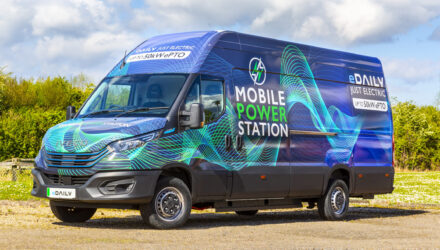Back in August 2017, the first-tier tribunal (FTT) considered whether three commercial vehicles (two Volkswagen Kombi vehicles and one Vauxhall Vivaro) should be classified as vans or cars for benefit-in-kind purposes. The distinction is crucial because the taxable benefit arising on an employee’s private use of a company van is frequently significantly lower than that arising on a company car.

Volkswagen Kombi
The legislation states that a van must be a goods vehicle, defined as a vehicle of a construction primarily suited for the conveyance of goods or burden. Whilst the outward appearance of the three vehicles in this case seemed similar, after taking account of the full characteristics of each, two were found to be cars and one was found to be a van.
The upper tribunal (UT) has now considered the matter further and upheld the FTT decision dismissing the appeals of both parties. The decision specifically set out that consideration of what vehicles might commonly be understood to be ‘cars’ or ‘vans’ is not directly relevant, nor is the use to which they are put. The design characteristics of the Kombis were equally suitable for carrying goods and passengers and therefore had to be cars as there was no primary purpose to their construction. On the other hand, the construction of the Vivaro, including its adaptations, was considered to be primarily suited to the conveyance of goods and was, therefore, a van for benefit in kind purposes.
So where does this leave employers when completing their P11D returns of benefits in kind? If they cannot rely on a common understanding of what is a van, must they undertake a review of the mechanical and underlying design and structure of each vehicle? The position seems still to be hopelessly unclear, and HMRC guidance on the matter still does not reflect the findings of the FTT decision. Combi-type vans like those reviewed by tribunal are increasingly popular in businesses, having an ability to transport both goods and people and this is, perhaps, their downfall for benefit-in-kind purposes. Whilst in many cases, they will be used mainly for the transportation of goods, the additional seating, sometimes removeable, currently means that HMRC are likely to classify them as company cars and liable to income tax and Class 1A National Insurance accordingly.

Vauxhall Vivaro
Some businesses might now decide to use double-cab pickup-type vehicles, as HMRC currently accepts these as vans for benefit-in-kind purposes, providing their payload is at least one tonne, excluding its hard top. However, we must ask whether there is logic in this distinction by HMRC that a double-cab pickup is a van but a combi-van is a car. Both have a further row of seats for transporting passengers, and both might equally be suited to the transportation of goods. What is equally illogical is that a commercial vehicle based on the design of a panel van with considerable load capacity can be treated the same as a car which is designed for the transportation of passengers with a limited load space.
Amidst this clouded picture, the one thing that seems clear is the need for updated legislation in the context of these combi vehicles, to allow businesses to meet their commercial needs without employees facing large and unexpected income tax costs.

















